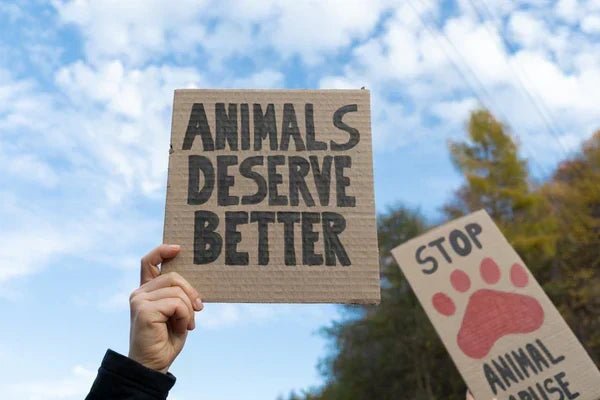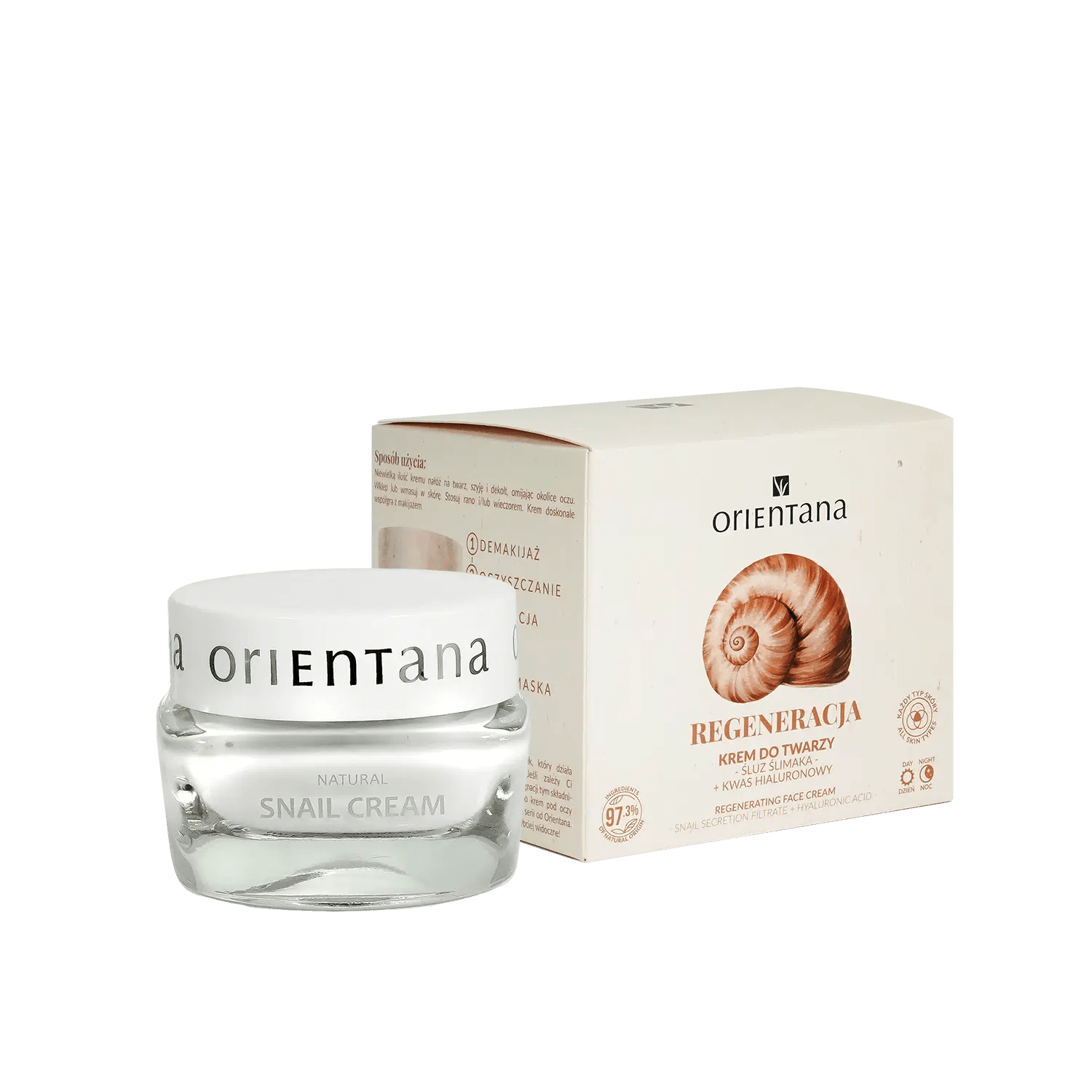I want you to know that since its inception, Orientana has never tested cosmetics or their ingredients on animals. We have always opposed this, but animal testing of cosmetics exists and is thriving in some places around the world.
Why is the topic of cosmetics testing on animals important to me? Consumer awareness is growing – more and more people are paying attention not only to the ingredients of cosmetics but also to how they are manufactured. According to the NielsenIQ 2024 report , 56% of consumers worldwide say they pay attention to cruelty-free status when choosing a cosmetic. In Poland, searches for the phrase "cosmetics not tested on animals" have increased by 74% over the last five years (Google Trends).
Ethics in the beauty industry is not a passing fad – it is a trend that is changing the market worldwide.
What is animal testing of cosmetics?
Animal testing of cosmetics is the process of examining the safety of products or their ingredients by using them on live animals. The goal is to assess toxicity, sensitization, and irritation potential, among other things.
The most commonly used species
- Rabbits – in eye irritation tests (so-called Draize test).
- Mice and rats – in toxicity and lethal dose (LD50) tests.
- Guinea pigs – in allergy tests.
According to Cruelty Free International , approximately 115 million animals are used in laboratory tests worldwide each year (not just in cosmetics).
What does animal testing of cosmetics look like step by step?
1. Sample preparation
A newly developed cosmetic composition or ingredient is sent to the laboratory, where it is tested on animals.
2. Conducting tests
- Draize test – application of a substance to the eye of a rabbit and observation of irritation.
- LD50 test – administration of a substance in increasing doses to determine the lethal dose for 50% of the tested animals.
- Skin tests – application of a substance to shaved skin areas to assess irritation and sensitization.
3. Observation and analysis
Animals are monitored for hours or days. Tests can cause pain, burns, blindness, or death.
The law and animal testing of cosmetics
European Union
- Since 2013, the EU has had a total ban on testing cosmetics and their ingredients on animals and a ban on selling products tested outside the EU.
- Exception: if the ingredient is used in other industries (e.g., pharmaceuticals) and requires toxicological testing, then it may have been tested, but not for cosmetic purposes. This means that large pharmaceutical and cosmetics companies can test their own products without any problem.
World
- China – mandatory testing for imported cosmetics until 2021; currently, the requirement is partially abolished (except for hair dyes and children's products, among others).
- USA – No nationwide ban ; some states (California, Nevada, Illinois, Maine, Maryland, Virginia, Louisiana) have introduced restrictions.
- Australia – ban from 2020
- Brazil – A ban on animal testing for cosmetics was introduced at the federal level in 2023.
Who tests cosmetics on animals?
Testing brands (or those associated with testing companies)
- L'Oréal (sold in China, although part of the line is cruelty-free)
- Estée Lauder Companies (e.g. Clinique, MAC)
- Procter & Gamble (e.g. Pantene, Olay)
Please note that the slogan "Not tested on animals" alone does not guarantee cruelty-free – what matters is the actual brand policy.
Why do brands still test on animals?
Legal Requirements – Sales in Countries with Mandatory Testing
Although the European Union has had a complete ban on testing cosmetics and their ingredients on animals since 2013, as well as a ban on selling products tested outside the EU, the situation worldwide is much more complicated.
In some countries – particularly mainland China – until recently, imported cosmetics were required to be tested on animals before they were released for sale. Although partial exemptions for so-called "general cosmetics" (e.g., shampoos, creams) were introduced in 2021, specialty products such as hair dyes, permanent waves, and baby products may still be subject to mandatory testing.
This means that global brands selling in such markets must undergo local safety procedures – which in practice often means animal testing.
Global politics – large corporations adapt to the most restrictive markets that require testing
Cosmetic companies operating in multiple markets often adopt a standardized safety strategy based on the requirements of countries with the most stringent regulations. As a result, animal testing is used even when alternatives exist to avoid the need to modify formulas or conduct additional testing for individual markets.
This policy is criticized by animal welfare organizations because it means maintaining archaic testing methods in the name of global sales consistency and minimizing legal risk.
Lack of investment in alternative methods
Alternative methods of testing the safety of cosmetics – such as in vitro tests, 3D models of human skin, cell cultures or computer modeling (in silico) – are in many cases cheaper, faster and more accurate than animal testing.
However, implementing these technologies requires upfront investment , specialized equipment, and trained personnel. Not all companies—especially those that have relied on traditional methods for years—are ready for such a step.
This means that, despite scientific progress, outdated procedures are still used simply because they are "proven" and incorporated into existing production patterns.
Innovation
One reason some brands still choose to test on animals is the desire to introduce new, synthetic ingredients with innovative properties that have not yet been adequately tested for safety. Countries like South Korea , a global leader in cosmetic trends, are seeing a particularly high number of new chemical compounds and semi-synthetic active ingredients . Their introduction often requires additional toxicological and safety testing—some jurisdictions still rely on animal testing.
The paradox is that precisely those markets considered the most innovative in terms of cosmetics—such as Korean K-Beauty—are more likely to encounter regulatory barriers related to new substances. This means that, despite enormous advances in alternative methods (e.g., in vitro testing, 3D skin models, bioinformatics ), some companies still rely on traditional research models to bring products to market faster.
Why is it worth choosing cruelty-free cosmetics?
Ethics – protecting the life and health of animals
Animal testing is associated with the suffering, stress, and often death of thousands of animals each year. By choosing cruelty-free cosmetics, consumers actively contribute to reducing the need for such testing .
Purchasing decisions have a real impact – the greater the demand for untested products, the more companies abandon controversial practices.
Ecology – alternative methods often have a smaller environmental footprint
Modern research methods, such as skin models in laboratories and computer simulations, use fewer natural resources, water and energy than traditional laboratory animal breeding.
Additionally, eliminating biological waste from animal testing reduces the environmental burden. In an era of growing environmental awareness, this aspect is becoming increasingly important.
Effectiveness – modern tests are more accurate in predicting human reactions
Many scientists emphasize that animal tests are not always reliable for humans – biological differences mean that research results can be misleading.
In turn, in vitro tests or 3D models of human skin better reflect actual human reactions, which increases consumer safety.
According to a report by the European Centre for the Validation of Alternative Methods (ECVAM) , some alternative tests are up to 30–40% more accurate in predicting allergic reactions than traditional animal tests.
Dynamic development of the cruelty-free market
According to the Grand View Research 2024 report:
- The global cruelty-free cosmetics market is expected to reach $6.1 billion in 2023.
- By 2030, it is projected to grow to USD 10.5 billion , representing a compound annual growth rate of 5.9% CAGR .
This trend shows that consumer choices are actually shaping the market and encouraging more companies to change their testing policies.
Orientana – 14 years without animal testing
The Orientana brand since its inception:
- Does not test cosmetics on animals .
- Does not use ingredients tested on animals .
- It does not use ingredients of animal origin obtained in a way that causes the death of animals .
- It bases its formulas on natural ingredients inspired by Ayurveda and Asian plants.
Thanks to this, every Orientana product complies with the cruelty-free principle.
Q&A – frequently asked questions
Are cosmetics completely free from animal testing in the EU?
Yes, but ingredients can be tested in other industries and then used in cosmetics.
Why don't manufacturers write Not tested on animals on the packaging?
Because it is prohibited by law in the European Union, where it is assumed that every cosmetic introduced to the market is not tested on animals.
Does selling in China mean testing?
Until recently, yes, but since 2021, testing has been no longer required for some products. However, some distributors still require animal testing.
Choosing cruelty-free cosmetics has a real impact on the market – the more consumers support ethical brands, the sooner animal testing will become a thing of the past.






